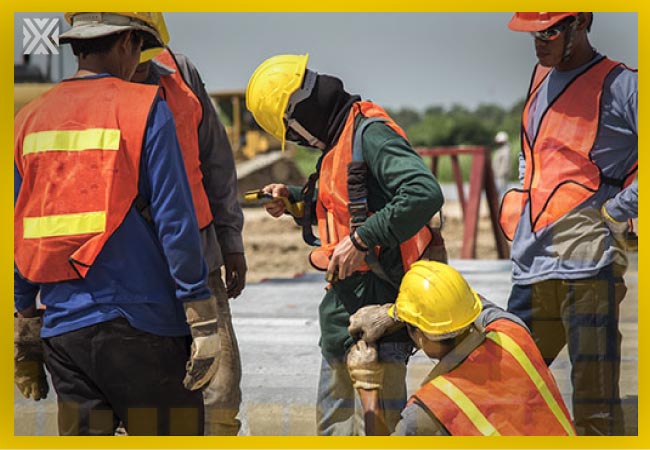Currency
January 05, 2023

Worksites aren’t static. Some constantly evolve while others undergo more subtle changes over time. Changes can occur at a moment’s notice, suddenly presenting workers with a new hazard to face.
That’s why safety professionals have to frequently re-evaluate their safety plans to make sure every old hazard remains covered and every new one gets addressed.
Further, supervisors and employees also need to keep their eyes open to the changes taking place in their work areas so they can stay aware of hazards that may not have been present before.
Failure to keep up with the ever-evolving worksite, whether it’s a construction site or a manufacturing plant, can have fatal consequences.
A May 2021 fatality investigated by the Washington State Fatality Assessment & Control Evaluation (FACE) program serves as a perfect example.

On May 5, 2021, a 60-year-old construction site superintendent with 40 years of experience died when a dump truck ran over him as it was backing up.
The superintendent was in charge of coordinating and directing subcontractors and scheduling dump trucks to haul away construction debris.
On the day of the incident, two drivers employed by a solid waste recycling company were emptying dumpsters when a 5-gallon bucket of paint fell out and spilled onto the street. The superintendent went over to organize the cleanup. He assigned one of the subcontractors to get sawdust to absorb the paint and told the drivers he was going to direct vehicles away from the spill area.
The drivers got back into their trucks to go pick up the next dumpster, which was located close to the spilled paint. Their trucks had to be parked side-by-side for the grapple of one truck to pick up the dumpster and empty it into the other truck.
One driver drove out through an alley, turned right and parked on the side of the street near the superintendent. The second driver turned left onto the street, drove forward and stopped. He checked his mirrors and got a hand signal from the superintendent to begin backing up. As the driver backed up, he lost sight of the superintendent and ran him over.
No one witnessed the incident. It’s unknown why the superintendent was in the backing zone or why the driver couldn’t see him.
FACE investigators found that:
The FACE report mentions that:
While those are definitely important reminders, the report also recommends employers “continuously assess the hazards of vehicles to workers on foot and ensure hazards are corrected.”
And that’s really the key takeaway – the importance of continuously assessing the worksite for hazards, whether you’re a safety professional, a supervisor or a worker.
On the day of the tragic incident, the superintendent’s worksite evolved as he was carrying out his job duties. The paint can fell out, causing an unexpected mess and setting things in motion for the fatality to occur.
If the superintendent would have taken a moment to re-evaluate the worksite around him, take in the potential hazards and plan a way to deal with them, he may have avoided tragedy.
Of course, in an ideal world everyone would always keep their wits about them and no one would be distracted by production quotas, project deadlines or family issues.
That’s where training, PPE and other kinds of controls come into play.
In that regard, the FACE report mentioned employers who use dump trucks should:
Controls such as these are needed to help protect workers in those moments when they do fail to notice new, or even pre-existing, hazards that crop up as the worksite evolves around them.
That’s why safety professionals have to frequently re-evaluate their safety plans to make sure every old hazard remains covered and every new one gets addressed.
Further, supervisors and employees also need to keep their eyes open to the changes taking place in their work areas so they can stay aware of hazards that may not have been present before.
Failure to keep up with the ever-evolving worksite, whether it’s a construction site or a manufacturing plant, can have fatal consequences.
A May 2021 fatality investigated by the Washington State Fatality Assessment & Control Evaluation (FACE) program serves as a perfect example.

A sudden paint spill
On May 5, 2021, a 60-year-old construction site superintendent with 40 years of experience died when a dump truck ran over him as it was backing up.
The superintendent was in charge of coordinating and directing subcontractors and scheduling dump trucks to haul away construction debris.
On the day of the incident, two drivers employed by a solid waste recycling company were emptying dumpsters when a 5-gallon bucket of paint fell out and spilled onto the street. The superintendent went over to organize the cleanup. He assigned one of the subcontractors to get sawdust to absorb the paint and told the drivers he was going to direct vehicles away from the spill area.
Superintendent signaled driver to back up
The drivers got back into their trucks to go pick up the next dumpster, which was located close to the spilled paint. Their trucks had to be parked side-by-side for the grapple of one truck to pick up the dumpster and empty it into the other truck.
One driver drove out through an alley, turned right and parked on the side of the street near the superintendent. The second driver turned left onto the street, drove forward and stopped. He checked his mirrors and got a hand signal from the superintendent to begin backing up. As the driver backed up, he lost sight of the superintendent and ran him over.
No one witnessed the incident. It’s unknown why the superintendent was in the backing zone or why the driver couldn’t see him.
FACE investigators found that:
- the truck didn’t have a backup camera
- no observer was used to signal if it was safe to back up
- the truck’s backup alarm was working as it backed up, and
- the truck drivers weren’t trained on procedures for backing up at construction sites.
‘Continually assess’ worksites for hazards
The FACE report mentions that:
- before backing a dump truck, the driver must determine that no one is currently in the backing zone, and
- it’s the responsibility of management to “establish, supervise and enforce training programs … to improve the skill and competency of all employees in the field of occupational safety and health.”
While those are definitely important reminders, the report also recommends employers “continuously assess the hazards of vehicles to workers on foot and ensure hazards are corrected.”
And that’s really the key takeaway – the importance of continuously assessing the worksite for hazards, whether you’re a safety professional, a supervisor or a worker.
On the day of the tragic incident, the superintendent’s worksite evolved as he was carrying out his job duties. The paint can fell out, causing an unexpected mess and setting things in motion for the fatality to occur.
If the superintendent would have taken a moment to re-evaluate the worksite around him, take in the potential hazards and plan a way to deal with them, he may have avoided tragedy.
Use training, PPE, other controls to fill in the gaps
Of course, in an ideal world everyone would always keep their wits about them and no one would be distracted by production quotas, project deadlines or family issues.
That’s where training, PPE and other kinds of controls come into play.
In that regard, the FACE report mentioned employers who use dump trucks should:
- require workers to wear high-visibility garments when exposed to vehicular traffic
- consider installing pedestrian proximity detection systems on trucks
- train drivers to use signalers or backup cameras when backing near workers on foot, and
- create policies requiring drivers to maintain visual contact with workers on foot and requiring workers on foot to stay out of vehicle backing zones unless they’re trained and acting as a signaler who is actively signaling the driver.
Controls such as these are needed to help protect workers in those moments when they do fail to notice new, or even pre-existing, hazards that crop up as the worksite evolves around them.









